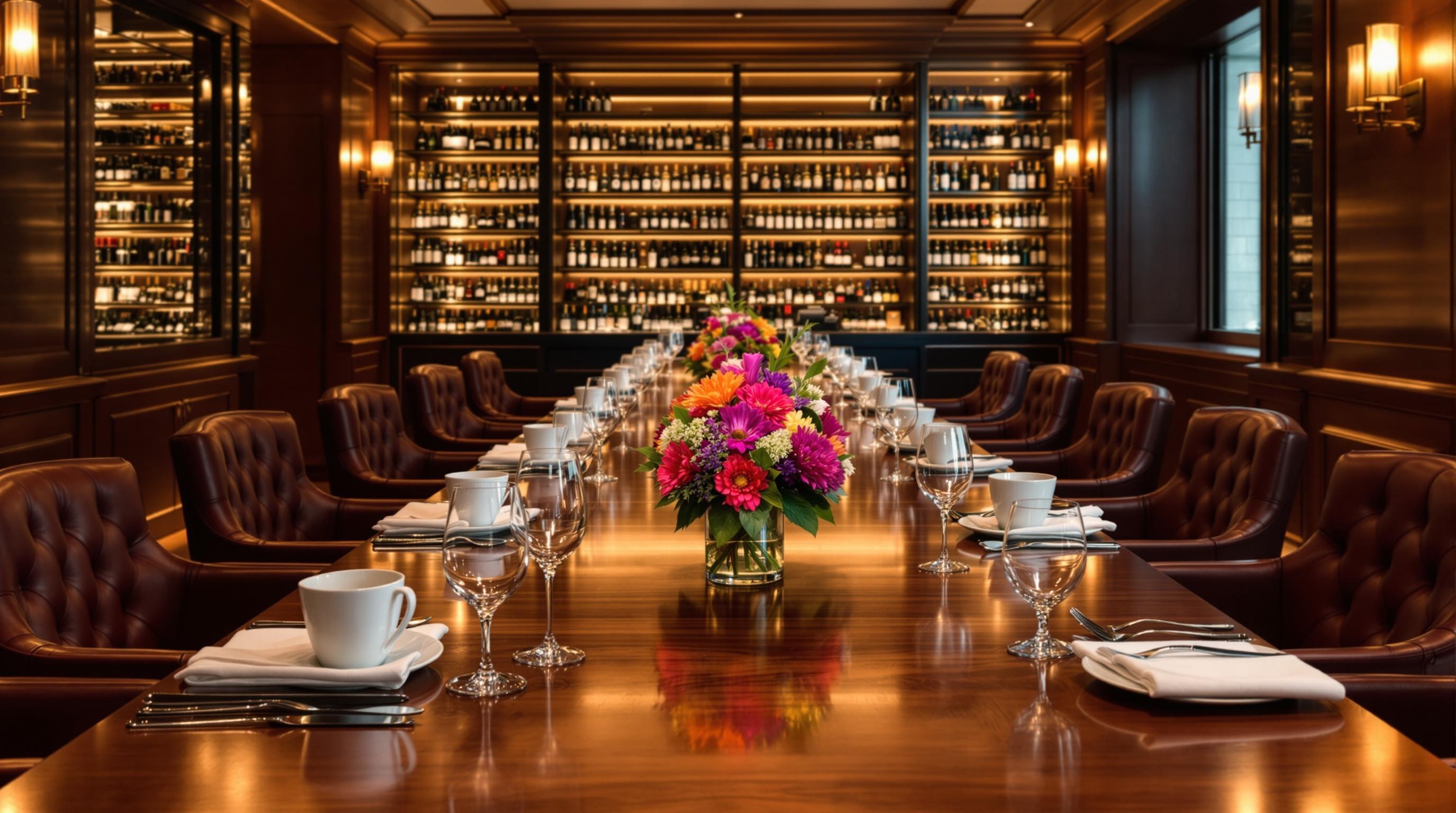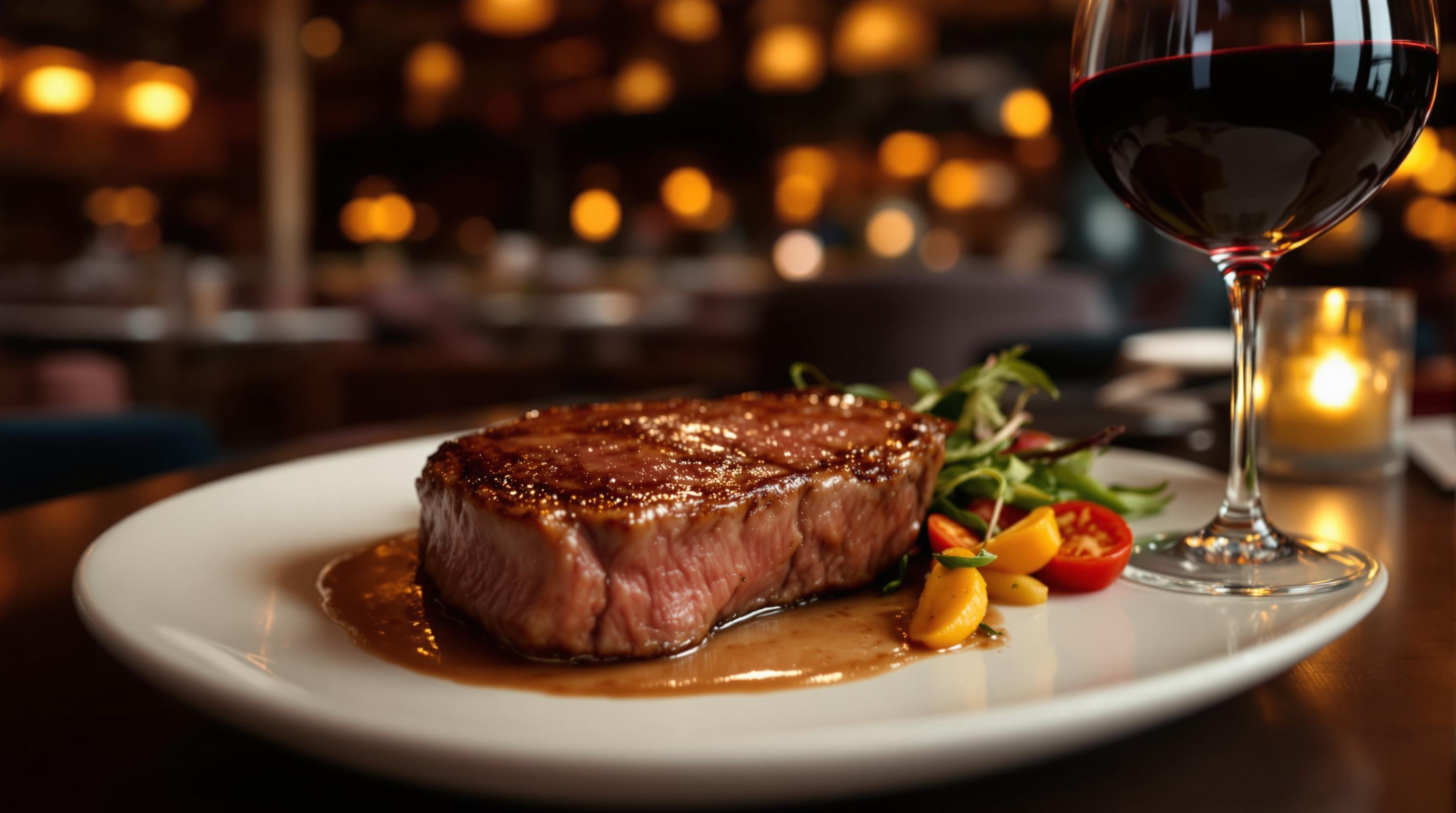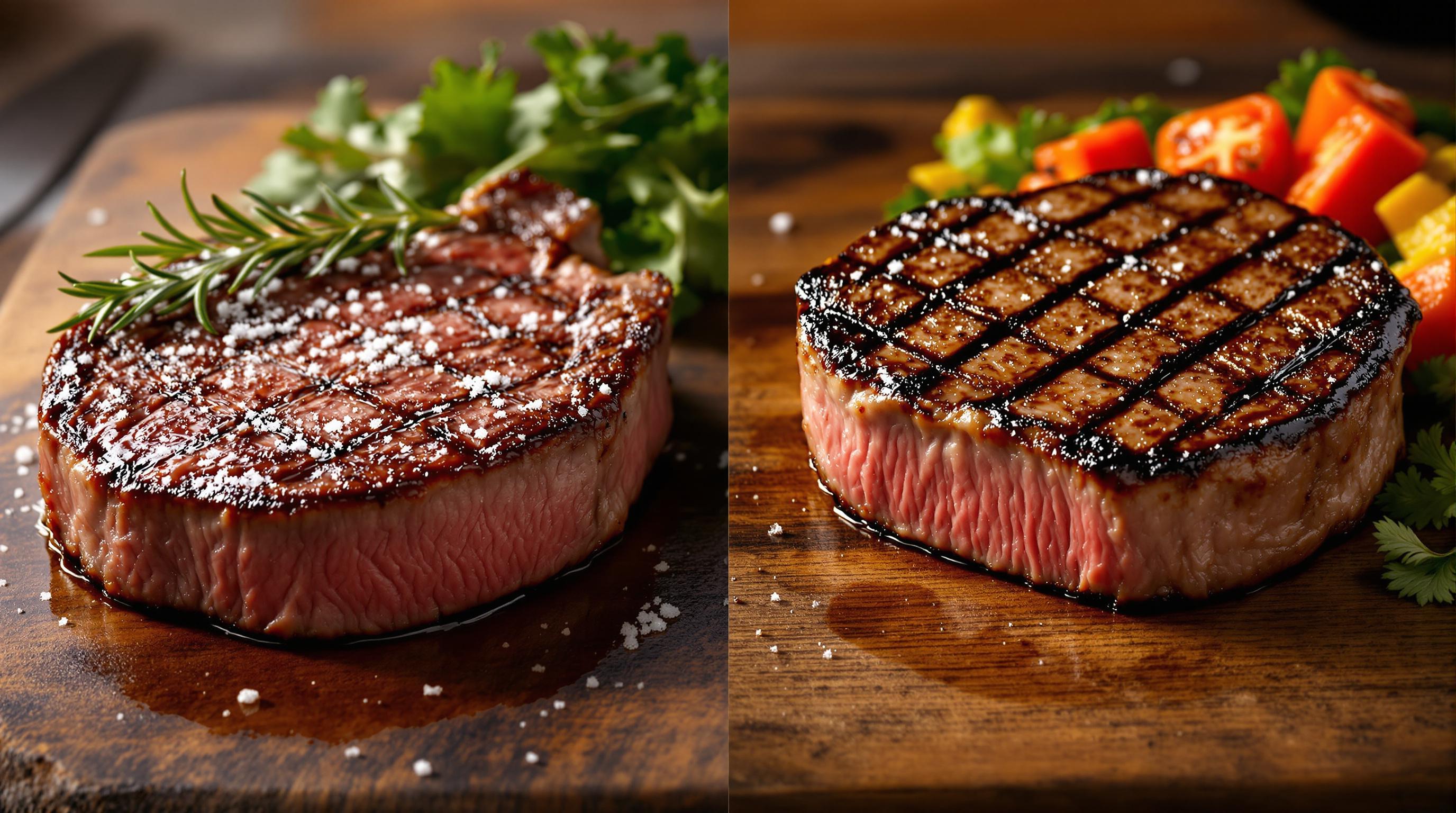Want to elevate your wine game? Start by choosing wines that align with the seasons. Here's what sommeliers focus on to select the perfect wine for any time of year:
- Spring: Light whites like Sancerre pair with fresh greens; try Beaujolais for lamb dishes.
- Summer: Refresh with Provence Rosé or Albariño; Barbera complements grilled meats.
- Fall: Medium-bodied reds like Barolo match mushrooms; White Burgundy suits roasted veggies.
- Winter: Bold reds like Amarone enhance hearty stews; Vintage Port is ideal for cozy nights.
Quick Tips:
- Match wine weight and acidity to seasonal dishes.
- Serve whites chilled (45–50°F) and reds slightly warmer (60–65°F).
- Consult a sommelier for expert pairing advice.
Seasonal wine selection enhances your dining experience by balancing flavors, temperatures, and the mood of each season. Ready to explore? Let’s dive in!
Selection Criteria for Sommeliers
Weather and Temperature Effects
Sommeliers consider the environment when selecting wines. On warm days, chilled wines are a go-to for their refreshing qualities. During cooler months, richer reds served slightly warmer enhance their depth and pair well with the season's mood. This temperature-focused method also helps align wines with seasonal ingredients.
Seasonal Food and Wine Matches
The ingredients of each season play a big role in wine selection. Spring's lighter flavors pair well with crisp whites and rosés, while winter's hearty dishes call for bold reds that match their richness.
| Season | Common Ingredients | Recommended Wine Styles |
|---|---|---|
| Spring | Fresh greens, delicate vegetables | Crisp whites, light rosés |
| Summer | Grilled fish, fresh salads | Refreshing, chilled whites and rosés |
| Fall | Mushrooms, game, root vegetables | Medium-bodied reds with versatility |
| Winter | Braised meats, hearty stews | Rich, full-bodied reds |
Wine Properties by Season
Wine characteristics also guide seasonal choices. For summer, go for wines with bright fruit notes and crisp acidity to keep things light. In fall and winter, wines with more body, a velvety texture, and a warming finish complement the season's heavier flavors perfectly.
Pick wines like a pro for this Autumn and Holiday season ...
sbb-itb-e6be165
Wine Picks for Each Season
Here’s a breakdown of wines perfectly suited for each season, taking into account flavors, pairings, and the changing weather.
Spring Wines
Spring is the season for fresh, lively wines. Light-bodied whites like Sancerre and Chablis bring crisp, mineral-driven flavors that pair beautifully with spring vegetables and delicate seafood dishes. If you're tackling tricky ingredients like asparagus, Grüner Veltliner from Austria is a great choice with its citrusy notes and subtle white pepper finish.
For red wine lovers, try lighter options like Beaujolais or Oregon Pinot Noir. These wines provide just the right structure for spring lamb and seasonal veggies, while also easing the transition into the warmer days of summer.
Summer Wines
Summer calls for refreshing wines that pair well with outdoor meals. Provence Rosé is a classic with its pale pink color and bright red berry flavors. For whites, look to coastal regions - Albariño from Spain’s Rías Baixas or Vermentino from Italy’s Liguria coast offer a saline edge that complements seafood.
If you’re grilling, light to medium reds like Barbera from Italy’s Piedmont region are a solid choice. With natural acidity and cherry flavors, Barbera works well with grilled meats while staying light enough for summer evenings. As the season winds down, these wines naturally lead into autumn’s richer selections.
Fall Wines
As the air turns crisp, it’s time for wines with more depth. White Burgundy from Meursault or Puligny-Montrachet combines richness with balanced acidity, making it a top pick for fall. If you’re feeling adventurous, orange wines offer a unique tannic structure and flavors that echo the season’s fruits.
For reds, medium to full-bodied options dominate. Châteauneuf-du-Pape blends bring warm spice notes that pair with game meats and root vegetables. Barolo from Piedmont, known for its tar and rose aromas, is perfect alongside mushroom dishes. These wines prepare the palate for winter’s bolder selections.
Winter Wines
Winter is the time for hearty, warming wines. Full-bodied reds like Amarone della Valpolicella deliver concentrated dried fruit flavors, making them ideal for rich braised dishes. For something sweet and warming, Vintage Port is a classic choice, perfect for sipping by the fire or pairing with cheese.
If you prefer whites, go for options with weight and texture, like Alsatian Grand Cru Riesling or Viognier from California’s Central Coast. These wines pair well with winter seafood while offering aromatic depth.
| Wine Style | Serving Temperature | Food Pairing Suggestions |
|---|---|---|
| Spring Whites | 45-50°F | Spring peas, asparagus, light fish |
| Summer Rosés | 40-45°F | Grilled seafood, fresh salads |
| Fall Reds | 60-65°F | Game meats, mushroom risotto |
| Winter Fortified | 65-70°F | Aged cheeses, dark chocolate |
Tips for Selecting Seasonal Wines
Here’s how to pick wines that perfectly complement each season, building on the basics of wine selection.
Understanding Wine Basics
When choosing wines, focus on body, acidity, and tannin. For warm weather, go for wines with up to 12.5% alcohol. During transitional seasons, 12.5–13.5% alcohol wines work well. For colder months, opt for wines with over 13.5% alcohol.
Acidity is especially important. High-acid wines feel crisp and refreshing in the heat, while lower-acid wines add a sense of warmth in cooler weather. Serve light whites at 45–50°F and full-bodied reds at 60–65°F for the best experience.
These characteristics also help you pair wines with seasonal foods.
Matching Wine with Seasonal Foods
Pairing wine with seasonal dishes is all about balance. Match the weight of the wine to the dish for the best results:
| Season | Common Dishes | Recommended Wine Styles | Key Pairing Notes |
|---|---|---|---|
| Spring | Fresh salads, light pasta | Crisp whites, light reds | Match wine acidity to vinaigrettes |
| Summer | Grilled meats, seafood | Rosés, aromatic whites | Opt for wines with lower alcohol |
| Fall | Roasted vegetables, game | Medium-bodied reds | Look for earthy flavor profiles |
| Winter | Braised meats, stews | Full-bodied reds, fortified wines | Focus on tannin structure |
This table gives you a quick guide, but there’s always room to explore and try something new.
Expert Resources and Advice
For tailored recommendations, consult a sommelier. Many fine dining establishments, like those listed in the NY Steakhouse Guide, employ certified sommeliers who can help you choose wines that reflect seasonal trends and pairings. These experts update their wine lists regularly and can provide tips to enhance your dining experience.
Want to learn more? Attend wine tastings and events to gain insights directly from the pros.
Conclusion
Key Takeaways
Choosing the right wine for each season enhances your dining experience by considering factors like weather, food pairings, and serving temperatures. Here’s what to keep in mind:
- Alcohol levels: Opt for wines under 12.5% in summer and over 13.5% in winter.
- Serving tips: Chill light whites and serve full-bodied reds slightly warmer.
- Food pairings: Match the weight and intensity of your wine to seasonal dishes.
These basics provide a solid foundation for refining your seasonal wine selections.
What to Do Next
Ready to put this into practice? Here’s how you can start creating your seasonal wine journey:
- Experiment with pairings: Try classics like a crisp Sauvignon Blanc with spring salads or a bold Cabernet Sauvignon with hearty winter stews. Note your favorites to build a personal guide.
- Seek expert advice: Visit upscale steakhouses (like those in the NY Steakhouse Guide) to explore curated seasonal wine lists and gain inspiration.
From light rosés for summer cookouts to rich ports for cozy winter nights, each season has something special to offer. Dive in and let your wine knowledge grow with every sip!


